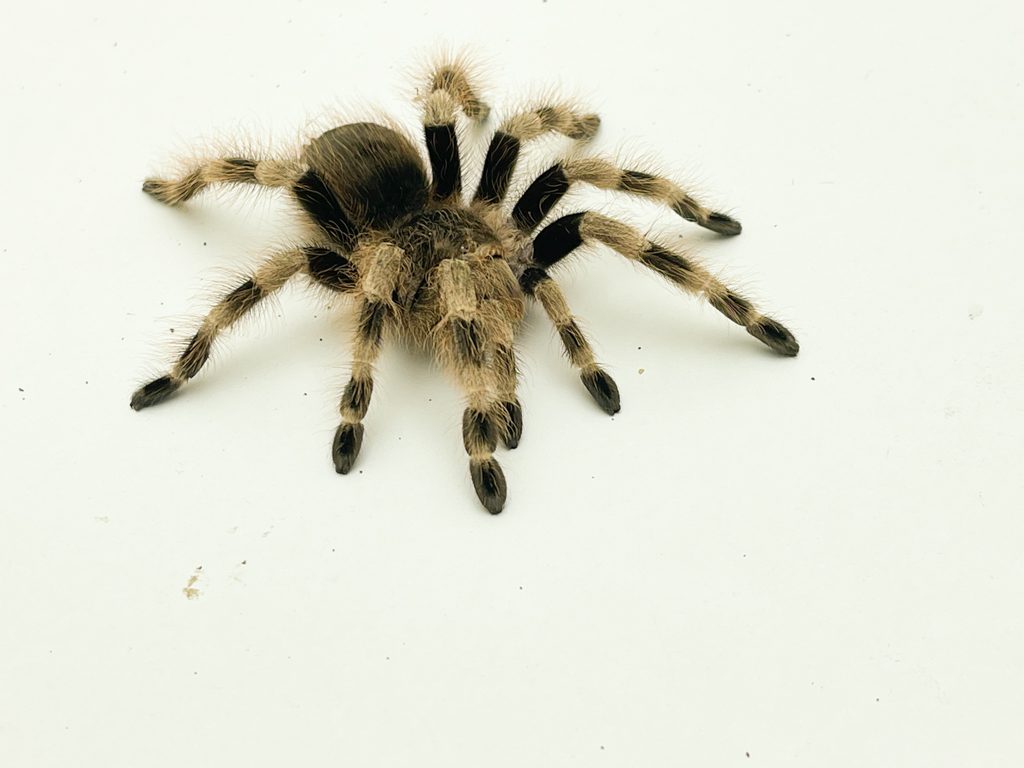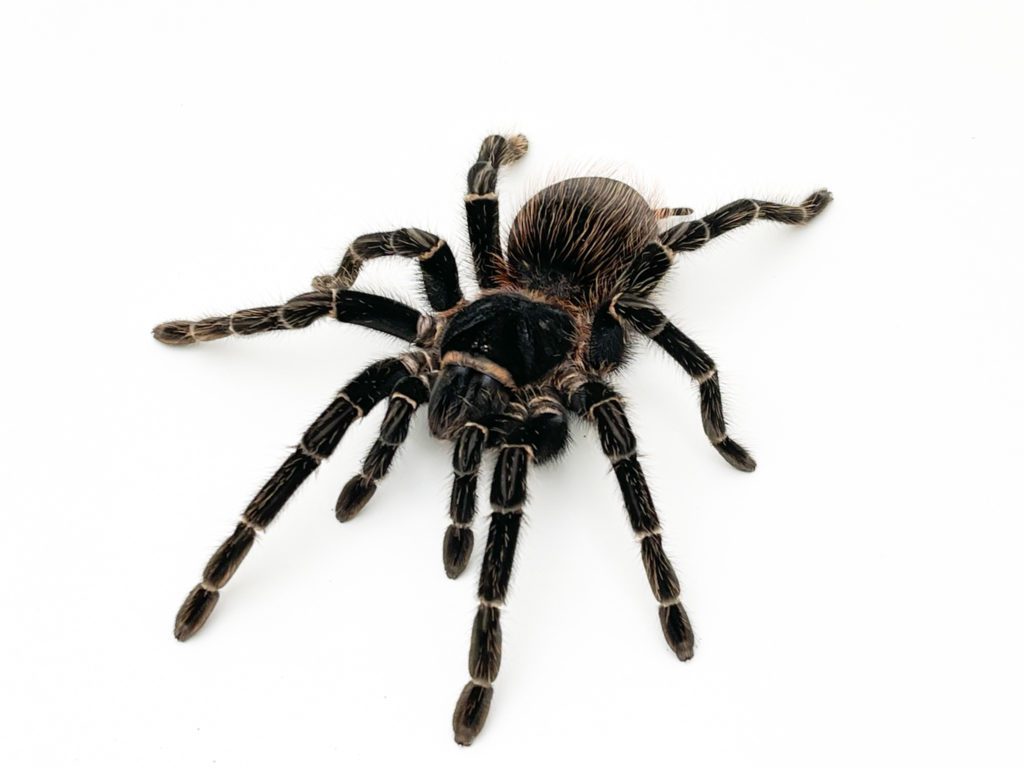
Tarantula
Care Sheet

There are an estimated 800-900 species of Tarantula across the world with the majority originating in South America but can be found in warm parts of the world in every continent except Antarctica
Tarantulas are usually classified into 2 groups, old world and new world tarantulas- this is based on where the species originate with old world relating to those originating from places like Asia, Africa and Europe, new world spiders being those originating from North and South America
Most New World tarantulas are less dangerous as their main defense is to shoot their urticating hairs in times of stress. Old World tarantulas are from hotter climates and tend to have venom which can cause a varying degree of reactions specific to the individuals immune system and health status. Old World species depend on a painful bite (usually) but of course this is dependent on the species


HANDLING YOUR TARANTULA
We do not advise handling of tarantulas due to their delicate bodies. They often have large abdomens, or some spiders are very thin and can be easily damaged by being handled and dropped or stressed by handling.
If you do need to handle your tarantula for a health check or to change enclosures, we only recommend handling certain species of the new world group
Most old world tarantulas should never be handled as they can be fast, venomous and are more likely to bite which can be incredibly painful. Use tubs and tongs to help move spiders so that handling can be avoided.


SEXING YOUR TARANTULA
There are a few noticeable characteristics which can be used to tell the gender of your tarantula. Young tarantulas are hard to sex as the sheds are small. Your tarantula should be able to be sexed after the 5th or 6th shed but it can still be difficult until they are larger.
Sexing can be done by looking at the shed. There are species specific differences in the shed but females generally have visible spermathecae which is the area which holds the males sperm. Most male tarantulas develop hooks when they sexually mature which aid in mating. They can be seen clearly on the front legs.In some species, females and males differ in colour with one of the genders being colourful and the other being brown or dull coloured.


HEALTH CHECK
Tarantulas should be able to move around normally without their legs bending or moving un-naturally. Sometimes if tarantulas have a dry molt they do not shed their skin properly and parts of them can become disfigured. They can also lose legs this way. Always ensure there is enough humidity and space in your tank for your spider to molt properly. If limbs are lost, they will often grow back throughout future molts depending on the age of your tarantula. If your tarantula becomes stuck in the moult, its always best to spray the tank to increase humidity. Never try to help a tarantula shed as this can be extremely harmful and can kill them due to stress. They become extremely vulnerable during molting and should be left alone undisturbed during this time.
Sometimes spiders will go through a period of not eating, especially during molting times, but they can also refuse to eat due to not being warm enough or not having the right secure places for the spider to feel confident enough to eat.
If you experience your spider not feeding, check temps and parameters of the enclosure to ensure everything is correct for the species.








ADVICE FOR LIFE!
When you buy your Pet & Housing from us!
Priority Boarding | Advice available face to face, via Telephone, Facebook Chat, Email, Instagram



